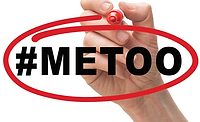Are You Responsible for Labor Violations Committed by Companies You Work With?
There are three cases that will alter how franchisees, general and sub-contractors, and other companies operate.


There are two pending and one recently decided case that will alter how franchisees, general and sub-contractors, and other companies operate.


Do you hire other companies to complete jobs in your workplace? Did you realize that you could be liable for labor violations that the company commits while working there? There are two pending and one recently decided case that will alter how franchisees, general and sub-contractors, and other companies operate. These cases will impact whether employers are responsible as joint employers for violations that other companies may commit. Moreover, in June 2017, the United States Department of Labor (DOL), under newly-appointed Secretary of Labor Alexander Acosta, withdrew its informal guidance that broadened liability for joint employment, and demonstrated a willingness to follow a more business-friendly approach to joint-employer liability.
Browning-Ferris Decision
One of the decisions that’ll have the greatest impact on joint employer liability is the appeal of the 2015 National Labor Relations Board (NLRB) decision in Browning-Ferris Industries of California, Inc., which upended a decades-old standard.
In the case, Browning-Ferris directed the overall operation, including facility hours, number of employees, and quality standards. They were authorized to reject workers from the staffing company and to examine the staffing company’s books and records. The staffing company had sole control over recruitment, interviewing, hiring, orientation and counseling. The staffing company also paid wages/benefits (cost-plus arrangement), scheduled employees’ shifts, supervised employees, and disciplined and terminated employees. Ultimately, Browning-Ferris was found to be a joint employer with the staffing company under the NLRB’s new standard.
Under that standard, companies are joint employers when they share or codetermine essential terms and conditions of employment. Direct, indirect, and even an unexercised right of control is sufficient. The NLRB will look at “totality of the circumstances” on a “case by case basis.”
Currently, this standard is being challenged in the United States Court of Appeals for the District of Columbia. One of the judges, appointed by former President Barack Obama, stated that the NLRB “dropped the ball” in its 2015 decision. The judge stated that the NLRB issued little guidance on how indirect control would be applied. These remarks about the standard aren’t a guarantee that the court will overturn the decision, but they show that the judges may be willing to rule against the NLRB.
Salinas v. Commercial Interiors
In January, the Fourth Circuit issued a decision in Salinas v. Commercial Interiors that promises to greatly impact the way that employers work with other companies to fill various needs at their worksites. The standard expands the definition of joint employer under the Fair Labor Standards Act (governing the minimum wage, overtime, recordkeeping and other issues) and presents a robust challenge to contractors and other business arrangements. One of the joint employers in the case, Commercial Interiors Inc., was a general contractor and the other joint employer was a subcontractor, J.I. General Contractors.
The Court concluded that under the Fair Labor Standards Act a joint-employment relationship exists when 1) Two companies share responsibility or codetermine “— formally or informally, directly or indirectly — the essential terms and conditions of a worker’s employment;” and 2) The two companies’ “combined influence over the essential terms and conditions of the worker’s employment render the worker an employee as opposed to an independent contractor.”
The court stated that the fundamental question to determine whether companies are joint employers is whether the companies are “not completely disassociated.” The court examined these factors:
- Whether the companies jointly determine or have the ability “to direct, control, or supervise the worker;”
- Whether the employers jointly determine or have the ability to “hire or fire the worker or modify the terms or conditions of the worker’s employment;”
- How long the relationship between the employers has existed and how permanent it appears to be;
- Whether one employer controls the other joint employer;
- Whether the work is done on a premises controlled by one of employers; and
- Whether the employers jointly handle duties that are ordinarily carried out by one employer such as providing tools or handling payroll.
McDonald’s USA, LLC
In October 2016, McDonald’s agreed to let the NLRB determine whether it and its franchisees are joint employers. The joint-employer issue has been so important to McDonald’s that it agreed to settle certain wage claims that occurred at five franchised restaurants in California for $3.75 million. If the NLRB rules against McDonald’s, then it could be responsible for violations of federal labor laws that are brought against franchisees. Such a ruling could cause many franchisors to limit the number of franchisees with which they do business.
Department of Labor Joint Employer Guidance
As noted earlier, in June, the DOL withdrew its informal guidance that sought greater scrutiny of business dealings where a joint-employer relationship may exist. In the statement announcing the decision, the DOL maintained that the withdrawal of the guidance “Does not change the legal responsibilities of employers…” The withdrawal of the guidance indicates that President Donald Trump and his administration are pursuing more business-friendly policies. This is a welcome reprieve for employers, but it doesn’t mean that businesses are free from joint-employer liability. The DOL will likely return to the prior standard and place greater emphasis on the actual control that the employer has over the employees.
What Should Employers do?
A pro-employer decision in any of the highlighted cases will enable businesses to maintain their current business relationships.
To best avoid potential liability as a joint employer companies should:
Review any contracts with subcontractors or staffing agencies with outside counsel to determine whether any of their actions could create joint-employer liability.
Carefully consider which staffing agencies or companies you have contracts with to determine whether they have adequate policies in place to avoid liability. Examine their history to determine whether they are frequent labor law violators.
Assess the risks and rewards of working on a contract. You may be getting the liability from the other parties.
Consider an indemnification requirement in the contract that the other company you work with will compensate you for damages that they cause. Make sure that your insurance coverage is sufficient.
Be prepared to change your policies if the McDonald’s and Browning-Ferris cases are decided against these companies — but stay tuned in for a probable appeal to the U.S. Supreme Court.
Looking for a reprint of this article?
From high-res PDFs to custom plaques, order your copy today!











